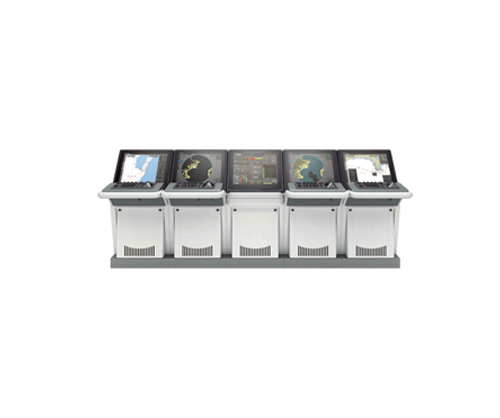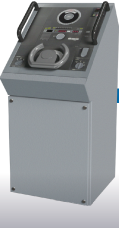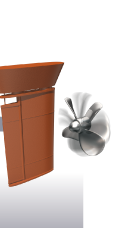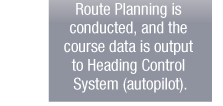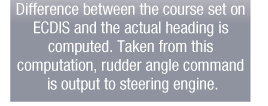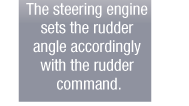FURUNO VOYAGER, the next-generation bridge system
FURUNO VOYAGER, next-generation bridge system, has been designed using our decades of expertise in sensor devices, network integration and software development. FURUNO VOYAGER bridge system offers multifunction workstations with seamless display of Radar/Chart Radar, ECDIS, Conning and Alert Management System data. FURUNO VOYAGER bridge systems have been developed with a completely new and intuitive user interface and in strict accordance with the most up-to-date safety and navigation standards in mind.
Total network sensor integration delivers enhanced situational awareness to the mariner. An uncomplicated display presentation simplifies and streamlines navigational tasks. Common responsibilities such as route planning, navigation status monitoring, log-keeping, alarm awareness and day-to-day chart management are made easy through common workstation layout and redundancy of display and control. Watchstanders will enjoy reduced workload and significant freedom to move about the bridge, with all necessary information available in a variety of displays and locations.
Multifunction display (MFD) capability
FURUNO VOYAGER offers workstations that combine flexibility and redundancy. Users may easily select ECDIS, Radar/Chart Radar, Conning display or Alert Management System at any multifunction display. Navigators will enjoy reduced workload and significant freedom to move about the bridge, with all necessary information available in a variety of displays and locations.
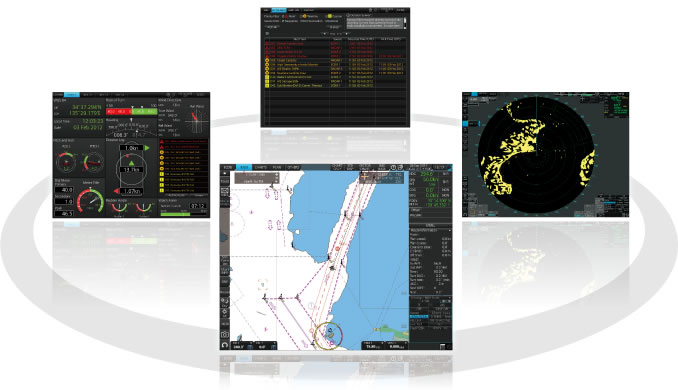
ECDIS mode
In ECDIS mode, the operators can generate and edit route plans. Also, ship’s behavior can be monitored in relations to the planned route. The detailed parameters set for each waypoint within the route can be viewed in the route information window.
Conning mode
In the Conning display mode, sensor information and real-time navigation data are presented to navigators in a thoughtfully designed display presentation.
Information to be shown in the conning display:
- Heading
- Pitch and Roll
- Rudder angles
- Rate of Turn
- Position fix
- Speed (bow speed, longitudinal speed and stern speed)
- Propeller pitch
- Wind speed and direction (both true and relative)
- Thrusters pitch
- Alert list
- BNWAS indication
- Date and time, etc.
Alert Management System mode
Alert Management System presents and prioritizes alert status and information. The well designed display layout gives operators the ability to quickly identify alert situations, and the actions required to rectify the cause of the alert.
The Alert management System satisfies MSC.302(87) Performance Standards for Bridge Alert Management.
ACTIVE ALERT
List of alerts currently active can be viewed.

By clicking on the  in the ACTIVE ALERT page, the list of icons used in the Alert Management System and their descriptions can be shown as a pop-up window.
in the ACTIVE ALERT page, the list of icons used in the Alert Management System and their descriptions can be shown as a pop-up window.
ALERT LOG
Alert history can be viewed in chronological order. The source of alerts, and the date and time each alert was raised, acknowledged and rectified are shown.
ALERT LIST
List of alerts available for each alert source can be viewed.
Track Control System permits automatic steering along the set route
FURUNO VOYAGER features Track Control System through integration of ECDIS and autopilot. This enables the vessel to keep on the plotted route automatically with minimum intervention from the navigator. This has been achieved through:
- flexible steering control
- route planning on ECDIS
- enhanced position reliability through multi-tiered data validation process
The operator is alerted to navigational warnings and potential dangers before the vessel is at risk.
FURUNO’s new user interface delivers straightforward, task-based operation
Stress-free operation with the well-designed control units
![]()
